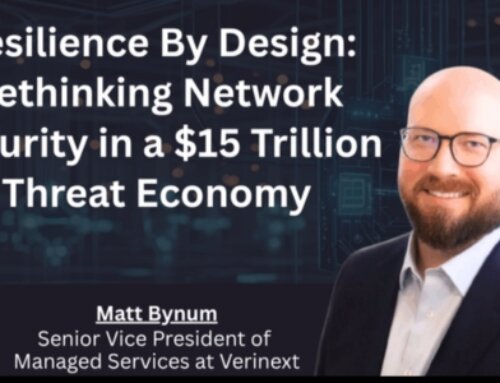Retail is evolving fast. Whether it’s the growth of omnichannel shopping, the surge in ecommerce, or the challenges of supporting hundreds of remote retail locations, the pressure is on for IT leaders to modernize infrastructure. Legacy systems and outdated networks just can’t keep up with today’s customer expectations—or the scale of security and operational demands facing the industry.
That’s why Verinext developed the new solution brief, Enabling Smarter Retail IT: Securing Remote Locations, Enhancing Efficiency, and Supporting Omnichannel Operations. It outlines the core IT strategies that retail organizations must prioritize to stay competitive in 2025 and beyond.
The Challenge: Scale, Security, and Seamless Experiences
Retailers are managing the complexity of physical stores, ecommerce platforms, edge devices, and customer data—all of which need to be secure, connected, and always available. Add in the rising cost of cyberattacks (an average of $3.85M per breach, according to IBM), and it’s clear that IT strategy isn’t just an operational concern—it’s a business-critical priority.
But there’s also a major opportunity. With the right mix of digital innovation, automation, and infrastructure modernization, IT can empower retail brands to deliver better customer experiences while cutting costs and improving resilience.
What’s in the Strategy?
Our solution brief explores six key IT areas retailers must focus on:
- Digital Innovation: 63% of retailers say digital acceleration is their top priority in 2025 (Deloitte). That includes modern POS systems, AI-powered inventory management in the cloud, smart shelf tech, and customer behavior analytics.
- Data Protection: With increasing compliance and privacy requirements, investing in IAM, PAM, and encryption is essential for protecting customer and transaction data.
- Intelligent Automation: From AI-driven demand forecasting to robotic process automation, retailers can unlock over $300 billion in cost savings by 2030 (McKinsey).
- Hybrid Infrastructure for ROBO: With 65% of retailers deploying edge computing (IDC), a hybrid model enables agility at scale, supporting high-performance apps like digital signage and self-checkout while centralizing management.
- Secure Networking and Zero Trust: Retail ranks among the top five industries targeted by ransomware (SonicWall). Micro-segmentation, SD-WAN, and Zero Trust architectures can safeguard both ROBO and e-commerce operations.
- Bridging the IT Skills Gap: With 69% of retail CIOs citing IT talent shortages (CompTIA), resource management can fill critical roles quickly while managed services offer scalability, 24/7 coverage, and cost predictability—critical for supporting seasonal traffic and rapid store rollouts.
Real Results: A Restaurant Chain’s IT Turnaround
The solution brief also features a case study on how a national restaurant chain partnered with Verinext’s Forty8Fifty Labs to modernize over 650 stores. By using a hybrid staffing model and strategic resource management, they reduced operational costs by 30% and completed the project ahead of schedule, all while maintaining uptime and customer service quality. [Read the full story here]
Explore the Infographic
We’ve also distilled the most impactful data and insights into a visual format to help your team quickly grasp the business value of smarter retail IT. Check out the infographic, Taking a Smarter Approach to Retail IT, for a quick overview of trends, challenges, and solutions.
Ready to build an IT foundation that supports the future of retail? Download the solution brief and infographic and https://verinext.com/contact/to start your transformation today.
Related Posts:






